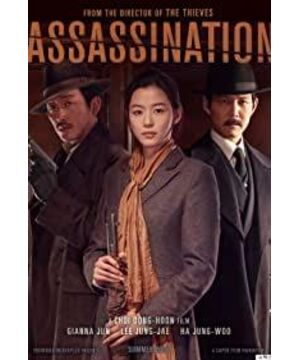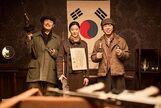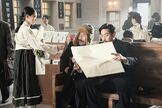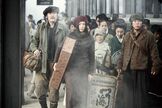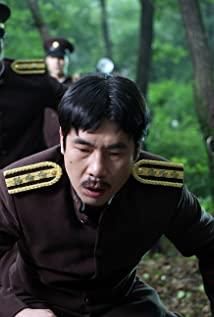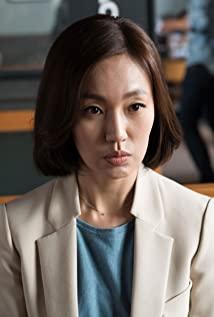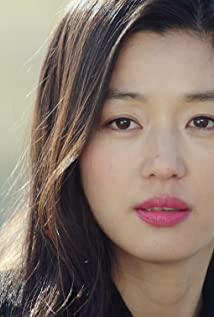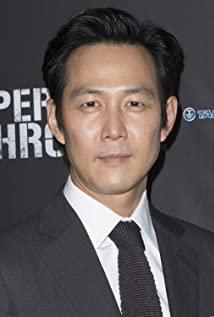In 1905, Russia suffered a crushing defeat in the Russo-Japanese War, and the Korean Peninsula was completely under the control of Japan. Some South Korean soldiers with strong personalities began to resist unorganized and tenaciously. Among them, the more famous one was in 1909, when An Chung-geun and others who were exiled in Northeast China were in exile. Harbin Railway Station assassinated Japanese minister Ito Bowen, causing him to die of serious injuries. An Zhonggen also died in Lushun Prison. In 1910, Japan annexed Korea and began to actively pursue an assimilation policy towards South Korea. They did not allow North Koreans to speak the Korean language and arbitrarily distorted and tampered with South Korean culture and history.
In 1911, the Revolution of 1911 broke out in China, and some members of the Korean League in exile in China, such as Kim Kyu-sik, participated in the revolution, and subsequently established the Korean independence movement group Tongji Society. At the same time, patriotic groups formed by South Koreans in exile in China, Russia, the United States and other countries have formed one after another. In 1919, at the Paris Peace Conference after the end of the First World War, the then US President Wilson put forward 14 propositions including anti-colonial "national self-determination", which deeply inspired Korean students who were studying in Japan. On January 21, 1919, the death of Gaozong Li Xi of the Lee Dynasty in Korea, the Japanese colonial authority did not immediately announce the death of Gaozong. Later, the rumor that Gaozong was poisoned by Japan was widely circulated. The South Korean people, who are the main ones, felt extremely disappointed and angry, and the Christians, Buddhism, Cheondoism and their followers of the Korean peninsula also strongly echoed. On March 1, tens of thousands of North Koreans gathered at the "Pagoda Park" in Jongno, Seoul, chanting the slogan "Long Live the Independence of Korea", and read the "Declaration of Independence", "We declare to the world that our North Korea is an independent country, and the North Koreans We are free people, human beings are equal, and we must tell future generations that we will always have a regime of national self-respect.” On the same day, demonstrations/protests/parades/parades broke out in Pyongyang, and even armed uprisings broke out in some areas. The Japanese authorities immediately took bloody force to suppress, dispatched military and police to shoot people everywhere, and hunted down anti-journalists. According to Japanese statistics, 1.36 million people on the Korean peninsula have participated in this movement, and more than 50,000 people have been arrested and imprisoned. , more than 6,000 people were killed. Here is a mention of Yoo Kwan-soon, who is known as Joan of Arc in the Republic of Korea. Yoo Kwan-soon, born in 1902, a senior student at Ewha Academy, one of the 33 signatories of the Korean Declaration of Independence, the March 1 Movement broke out, and after the school announced the suspension of classes, Yoo Kwan-soon returned to his hometown of Chungcheong Cheonan County (Today's Anshi), South Province, continued to engage in independent activities. He was arrested and sentenced to 7 years in prison. Later, he died of torture and malnutrition at the age of 17. In 1962, the South Korean government awarded him the "Founding Medal" posthumously, and built a martyr's memorial shrine in his hometown.
The "March 1 Movement" failed in the bloody storm. The Korean patriots who participated in the movement began to exile in large numbers. Some went to the Soviet Union, Russia and the United States. the armed struggle against the Japanese invaders. Subsequently, the Parliamentary Government of the Republic of Korea, the Seoul Government, and the Provisional Government of the Republic of Korea were successively announced in Vladivostok, Seoul (most members were in exile abroad), and Shanghai.
On April 10, 1919, the first meeting of the Provisional Council was held in the French Concession in Shanghai. The meeting elected Li Dongning and Sun Daozhen as the chairmen and vice-chairmen, and elected Rhee Syngman as the prime minister, An Changhao as the interior minister, and Jin Gyuzhi as the foreign minister. The meeting decided After independence, the Republic of Korea was named the Republic of Korea, ending the monarchy and implementing a republic. Later, under the mediation of Ahn Chang-ho, the forces of various factions were actively integrated. The provisional governments in Vladivostok and Shanghai announced their dissolution, and recognized the Seoul government founded by 13 representatives of South Korea as orthodox, and reorganized the provisional government of the Republic of Korea on this basis. On September 6, the interim government promulgated the first constitution, and the Senate elected Syngman Rhee as the interim president in accordance with the constitution, and he appointed Prime Minister Lee Dong-hui and other cabinet members. In 1921, due to ideological differences within the provisional government, Syngman Rhee and his cronies went to the United States and stayed there for lobbying work. Although the provisional government in Shanghai actively carried out international propaganda activities to win the support of the independence movement from all over the world, the United States and Britain and other countries responded relatively indifferently. The Soviet Union actively supported the Korean independence movement because it was directly threatened by Japan strategically. At that time, more North Koreans pinned their hope of rejuvenation on the support of the Chinese government and people. The aggression suffered by North Korea has indeed won the sympathy of many Chinese people. These people were the main people in the Beiyang government era. They are mainly civil people such as Zhang Jiluan and Hu Lin. During the Beijing government period, because the whole country itself fell into a situation of separatism by warlords, it was too busy to take care of itself, and naturally it could not give much support to North Koreans. Mr. Zhongshan, who advocates revolution, has won the support of many Koreans because of the policy of assisting the weak and small nations in resisting imperialism in his action program. Lu Yunheng (in one word, Kim Kyu-sik) was ordered to go south to congratulate Sun Wen, and asked Mr. Zhongshan for cooperation, including the admission of Korean students by the Chinese military school. This can be said to be the real beginning of the cooperation between the Chinese Kuomintang and South Korean independents. In fact, when Mr. Zhongshan launched the revolution, there were many Korean followers. For example, Pu Chun, the representative of the Korean Provisional Government in Guangzhou, was a member of the Chinese Revolutionary Party. Later, it was Jiang Zhongzheng, a loyal follower of Mr. Zhongshan, who really implemented the cooperation between China and South Korea.
The Whampoa Military Academy was established in 1924, and since the 4th, it has absorbed a group of Korean students. In order to avoid the investigation by Japanese spies and protect the safety of these North Koreans, these Korean students have dual nationalities. The National Government issued the Republic of China passports to them. They, and gave them Chinese names, made them more "Sinicized" in their daily routines. When the Northern Expedition Army conquered Wuhan in 1926, the Wuhan Branch of the Central Military and Political School set up a special class to recruit and train Korean students. In 1932, the National Military Commission and the leader of the Korean National Socialist Party and Huangpu graduate Jin Ruoshan jointly organized a cadre training class in Tangshan, Nanjing, and nearly 100 Korean students were received. In 1935, Jin Ruoshan and the military commission commander Kang Ze were in Xingzi, Jiangxi Co-organized training classes and received 84 Korean students. These students later became the backbone of the "North Korean Volunteer Team" created by Jin Ruoshan. In addition, the Organization Department of the Kuomintang also cooperated with the interim government to set up training classes in Luoyang, Nanjing and other places to recruit Korean students. Most of these young people later became the backbone of the "Korea Restoration Army".
In addition to stepping up the training of Korean youths in China, the Korean Provisional Government also carried out some assassination activities against Japanese people. In January 1932, Lee Bongchang, a member of the secret group "Korean Patriotic Regiment" led by Kim Jiu, was in Sakurada, Miyagi, Tokyo, Japan. Throwing bombs at Emperor Hirohito in front of the door shocked the Japanese government and opposition although unsuccessful. On April 29 of the same year, Yin Fengji, a member of the "Korean Patriotic Regiment", threw bombs at the Japanese military and political dignitaries who were celebrating the "Tianchang Festival" in Shanghai Hongkou Park, causing the Japanese Army in Shanghai Commander-in-chief Shirakawa Yoshino and the 3rd Fleet Commander Nomura. Yoshizaburo, the 9th division commander Ueda Kenkichi, and the Japanese minister to China Aoi Shigemitsu were killed and injured, causing a sensation at home and abroad. These actions also made the Nationalist government stand out against the will of the Korean independents. In May 1933, Jin Jiu, under the arrangement of Chen Guofu, then the chairman of Jiangsu Province and the organization minister of the Central Committee of the Kuomintang, visited Jiang Zhongzheng in Nanjing, and reached an agreement on the training of military officers for the Korean independence movement and the increase in financial assistance to the Korean Provisional Government. In short, after 1932, with the expansion of the Nationalist government's military strength and the improvement of its financial situation, the Nationalist government's assistance to the Korean Provisional Government was not only verbal and moral, but organized and planned until the outbreak of the full-scale Anti-Japanese War in China. , this kind of assistance and cooperation has also appeared in a completely new situation. After the Lugouqiao Incident in 1937, China's war of resistance against Japan broke out, Nanjing fell, the Nationalist government moved to Wuhan and then to Chongqing, and the South Korean Provisional Government moved westward. Qijiang. At this time, the activities of the South Korean Provisional Government gradually changed from underground to public, and their eyes turned to the armed struggle against Japan.
On October 10, 1938, Whampoa graduate Jin Ruoshan used his connections in the Political Department of the Nationalist Government Military Commission, and with the assistance of the Eighth Route Army's Wuhan Office, to "participate in the Chinese War of Resistance, overthrow the old warlords, and promote the Korean Revolutionary Movement" For the purpose, the Korean Volunteer Team was established in Hankou. In the early stage, there were 120 members and two teams were set up, which were affiliated to the field work team of the Political Department of the Military Commission. Initially active in the Fifth War Zone, from 1938 to 1940, the Volunteer Team moved to 13 provinces in 6 war zones. They printed and distributed brochures, distributed leaflets, posted slogans on the front line of the Anti-Japanese War, and participated in the Battle of Wuhan and Kunlun Pass. , Zhongtiaoshan and other battles. The North Korean Volunteer Team is very left-wing and has close ties with the CCP. Jin Ruoshan was an opponent of the Provisional Government, and he disagreed with Kim Jiu, Chairman of the Provisional Government of South Korea. At the beginning of 1939, with the help of Chiang Kai-shek, the two jointly issued a "report to the ruling compatriots" in July. Jin Ruoshan's left-wing color, Jin Ruoshan still decided to act alone, adding a third unit of the Volunteer Team, which was mainly responsible for broadcasting to Japan, interrogating prisoners of war, and translating intercepted Japanese military documents on the front line. In 1940, the Korean Volunteer Team grew to 318 people. In April 1941, 120 main members including Park Hyo-san and Jin Shi-il joined the Eighth Route Army collectively, forcing Jin Ruo-shan to give up his opposition to Jin-jiu and to issue a statement to join the provisional government.
After joining the Communist Party of Wu Ting, deputy commander-in-chief of the People's Army, Kim Doo-bong, chairman of the Supreme People's Assembly of the DPRK, and General Park Jung-deok, deputy chief of staff of the Korean People's Army, and Lieutenant-General Park Jinbo, all studied or worked in these schools. The "Yan'an faction" in the government.
In April 1940, the Korean Nationalist Party (Kim Jiu), the Korean Independence Party (Chao So-ang), and the Korean Revolutionary Party (Li Qingtian) formed the Korea Independence Party as the ruling party of the provisional government. In September, the interim government was moved from Qijiang to Chongqing and opened for public office, and the inauguration ceremony of the Korean Restoration Army was established at the Jialing Hotel. Hundreds of dignitaries from the state, including Zhou Enlai, the representative of the CCP, attended the ceremony. The provisional government elected Jin Jiu as chairman, Li Shirong as finance minister, Cao Chenghuan as military minister, Zhao Wangu as interior minister, and appointed Li Qingtian as commander-in-chief of the Restoration Army. The interim government announced that the Liberation Army was formerly the former South Korean Army, an armed independent group that inherited the 33-year tradition of the Anti-Japanese Rebel Army and the Independence Army. This move greatly boosted the morale of Koreans at home and abroad. A provisional government has two armies, which made the Nationalist government have a headache on how to integrate the Liberation Army and the Volunteer Team. In the end, Jiang Zhongzheng simply ordered He Yingqin to forcibly merge the two teams. After the merger, the Liberation Army consisted of four detachments, all of which were allocated by the Military Commission of the Nationalist Government. The main task was to take advantage of their knowledge of Japanese and cooperate with the front-line troops of the National Army to publicize the Japanese army and Korean soldiers in the Japanese army. After the Volunteer Corps was merged into the Liberation Army, Jin Ruoshan was appointed as the deputy commander-in-chief of the Liberation Army. After the split of the Korean Peninsula, he defected to North Korea.
In December 1942, Jiang Zhongzheng approved the "Guidance Plan to Assist the Korean Restoration Movement", decided to "recognize the provisional government before other countries at the appropriate time", and designated Wu Tiecheng, Zhu Jiahua, and He Yingqin as the top leaders. In early 1943, Shao Yulin, Director of Intelligence of the Ministry of Foreign Affairs of the Nationalist Government, published an article in Ta Kung Pao, pointing out that "North Korea's independence is an inevitable conclusion. North Korea is a springboard for Japanese aggression, and the invasion of its independence is the starting point of the Sino-Japanese War. The inducement of the Russo-Japanese War, and also the distant cause of the Pacific War. Therefore, the reconstruction of its independence should be the end of the current Sino-Japanese war, and in fact, it may become one of the common goals of the Allied countries’ coordinated operations.” This article was published by It was regarded as a public statement of the Nationalist government on the status of North Korea after the war. At the Cairo Conference at the end of 1943, Mr. Jiang and Chinese representatives spoke up for the Korean people, making the issue of Korean post-war independence included in the conference statement. However, at the Yalta Conference in February 1945, the United States and the Soviet Union secretly reached an oral agreement that the two sides would occupy North Korea with the 38th latitude as the boundary. In August 1945, Japan surrendered, and the United States and the Soviet Union took control of the Korean Peninsula in accordance with the agreement. At the end of the year, the foreign ministers of the United States, the Soviet Union and the United Kingdom decided at the "Moscow Conference" that North Korea would be entrusted by the Allies for five years before independence. On April 25, 1946, the United Nations Constitutional Convention was held in San Francisco. Since the Korean Provisional Government was not recognized by other countries at the time, Korea was not invited to participate in the conference. The National Government originally planned to assist the Korean Provisional Government to send a delegation to participate as an observer, but The U.S. government refused to issue a visa and caused a miscarriage. In the end, South Korean independence leaders Syngman Rhee, Han Shidae, Tian Jingwu and others who were in the U.S. went to San Francisco to carry out antitrust propaganda with Chinese representatives. The representative was amazed.
Korean independent organizations living overseas returned to Korea one after another after the surrender of Japan. In September 1945, the pro-American Syngman Rhee, Seo Jae-pil, Han Shi-dae, Tian Jing-wu, Jin Hu and others returned to Korea one after another under the arrangement of the US government. On the 19th, Kim Il-sung landed in Yuanshan on a Soviet warship, and the members of the provisional government living in Chongqing have been taken care of by the Nationalist government since they went into exile in China. Sadly, on November 5th, Jin Jiu and his entourage flew from Chongqing to Shanghai and attended the Korean Overseas Chinese Welcome Conference held in Hongkou Park that night. On the 23rd, Jin Jiu and his entourage took a flight back to South Korea under the arrangement of the US military stationed in South Korea. The Korean independent organizations after returning to China mainly include the "pro-American faction" led by Syngman Rhee, the "pro-China faction" led by Kim Goo, the "pro-Soviet faction" led by Kim Il Sung, and the "pro-Japanese faction" led by Song Zhenyu and Kim Xingzhu. ". In South Korea, Syngman Rhee and Kim Jiu jointly dealt with Hodge, commander of the Sixth Army of the US Army in South Korea, and opposed the international trusteeship. In August 1947, the U.S. State Department sent a letter to China, Britain and the Soviet Union, requesting consideration of new methods to replace trusteeship, but the Soviet Union refused. In September, the United States proposed directly to the UN General Assembly to hold elections throughout South Korea under UN supervision. Form an independent government. In November, the proposal was passed, and the "United Nations Korea Committee" composed of representatives from nine countries including China, France, Australia, Canada, India and the Philippines was established. In January 1948, the "Korea Committee" held its first meeting in Seoul to negotiate the method of elections throughout Korea, but was opposed by North Korea. In desperation, the committee decided to hold elections in South Korea first. According to the population ratio of North and South Korea, 200 members of parliament will be elected in South Korea, and the remaining more than 100 will be filled by North Korea under the supervision of the United Nations. Kim Goo believed that this move would make the separation of the North and South of the Korean Peninsula a reality, and publicly opposed this practice. In February 1948, Kim Goo sent a letter to Kim Kebong, chairman of the North Korean "Independence League", advocating the holding of a meeting of North and South Korean political parties. In April, Kim Kyu and Kim Kyu-sik went to Pyongyang for consultations and returned without success. In May, South Korea held elections under the supervision of representatives of the United Nations to establish a constituent assembly. Syngman Rhee was elected as the speaker, and Kim Kyu and Kim Kyu-sik were the vice-speakers. In July, the Constitutional Assembly passed the constitution, Rhee was elected the first president of the Republic of Korea, and Lee Bum-seok was the prime minister. On August 15, the Korean government was formally established.
Kim Goo ceded the position of Speaker of the National Assembly to Kim Kyu-sik and quit politics. At the end of 1949, Kim Goo was assassinated. Kim Il-sung established the Central Organization Committee of the Communist Party at the end of 1945. In August 1946, he joined the Korean Communist Party and the Korean New Democracy Party to create the Workers' Party of Korea. In February 1947, the Korean People's Committee was established as its chairman. 24 days after South Korea established the Republic of Korea, Kim Il-sung announced the establishment of the Democratic People's Republic of Korea in North Korea.
View more about Assassination reviews


